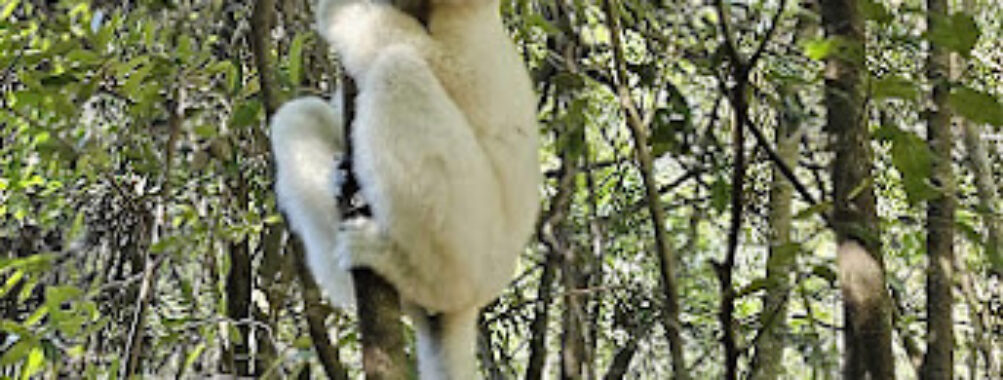
Zahamena National Park
Table of Contents
Description
Zahamena National Park is one of those places that sneaks up on you. At first glance, it’s a dense green rainforest with mist curling through the treetops, but spend a little time here and you’ll realize it’s a living, breathing world of its own. The park’s terrain is no joke—steep hills, deep valleys, and a network of rivers that seem to sing their way through the forest. There’s a rawness to it. You can feel it in the damp air, hear it in the calls of lemurs, and see it in the shimmer of waterfalls that appear out of nowhere after a bend in the trail.
Wildlife is the real star here. Lemur species peer at you from the canopy like curious neighbors, and the birdlife is so varied that even if you’re not a birder, you’ll find yourself pointing out flashes of color in the leaves. There’s also an unexpected human element—small-scale gem mining in certain areas—which gives a glimpse into local livelihoods. It’s not a park that’s been overly polished for tourists, and that’s part of its charm. You’ll find picnic tables, swings, and even a playground, but the wilderness still takes center stage. It’s kid-friendly, dog-friendly, and wheelchair accessible, which is rare for a rainforest park of this scale. Just be prepared: the trails can be challenging, and the weather has a mind of its own.
Key Features
- Steep hills, deep valleys, and lush rainforest canopy
- Multiple waterfalls and river systems
- Home to various lemur species and diverse birdlife
- Wheelchair accessible entrance and parking
- Kid-friendly hikes, playground, and picnic facilities
- Dog park and pet-friendly access
- Opportunities to observe small-scale gem-mining activity
- Public restrooms and shaded rest areas
Best Time to Visit
If you’re looking for dry trails and clearer skies, the best time to head here is during the cooler, drier months—roughly May through October. That’s when hiking is most manageable and the river crossings are less dramatic. But honestly, there’s something magical about visiting in the wetter months too. The waterfalls swell, the forest feels more alive, and you’ll practically have the place to yourself. Just be ready for mud, leeches, and the occasional downpour that seems to come out of nowhere. I once got caught in one of those storms without a rain jacket—ended up completely soaked but laughing the whole way back. Sometimes the best memories come from the unexpected.
How to Get There
Reaching Zahamena National Park is part of the adventure. The nearest major towns have road connections, but the last stretch can be bumpy and slow, especially after heavy rain. Public transport is an option, but it’s not the most reliable, so if you can arrange a private vehicle or join a guided trip, you’ll save yourself some stress. The drive winds through rural landscapes dotted with rice paddies, small villages, and hills that seem to roll on forever. It’s worth taking your time—stop for a snack at a roadside stall, chat with locals, and soak in the scenery before you even set foot in the park.
Tips for Visiting
First things first—pack for unpredictability. A lightweight rain jacket, sturdy hiking shoes, and a dry bag for your electronics are essentials. Even if the day starts sunny, the rainforest can change its mood in minutes. Bring snacks and water, because while there are picnic areas, you won’t find a café waiting for you in the middle of the forest. And if you’re bringing kids, the kid-friendly trails are a blessing, but keep an eye out for slippery patches after rain.
If you’re a wildlife enthusiast, an early start is your best bet. The forest wakes up with the sunrise, and you’ll catch more animal activity before the heat of the day sets in. For photographers, the light filtering through the canopy in the morning is pure gold—literally the kind of light that makes you stop walking just to stare. And yes, you can bring your dog, but make sure they’re leashed and comfortable with the wild environment. The sounds and smells here are unlike anything in the city, and it can be overwhelming for pets.
Lastly, remember that this is a protected area. Stick to marked trails, avoid disturbing wildlife, and respect any local guidance you’re given. The park may not have the manicured look of some tourist-heavy spots, but that’s exactly why it feels so real. You’re stepping into a place where nature still calls the shots—and that’s something worth experiencing at least once in your life.
Location
Places to Stay Near Zahamena National Park
Find and Book a Tour
Explore More Travel Guides
No reviews found! Be the first to review!